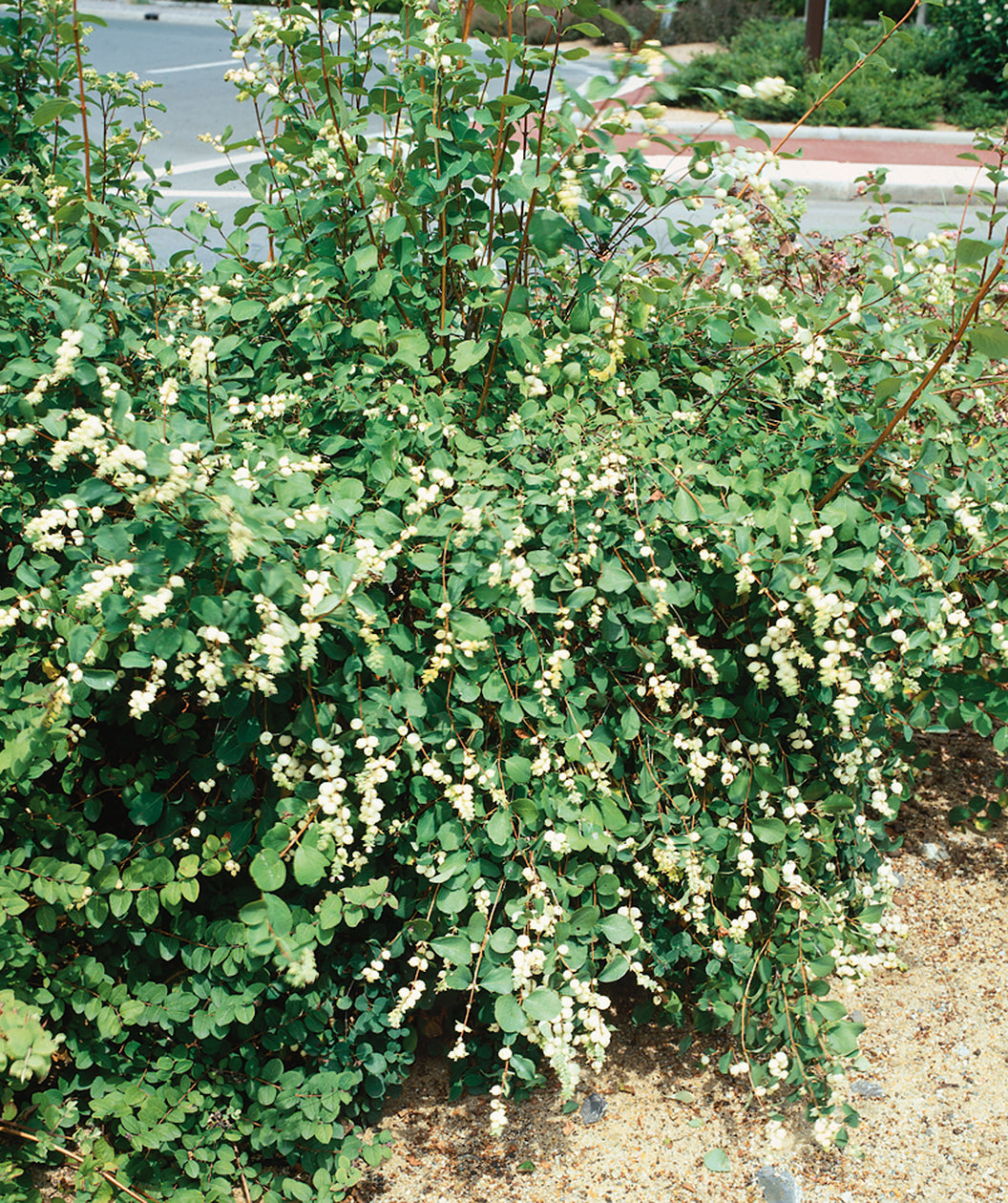CLUSTERS OF BRIGHT WHITE ORNAMENTAL BERRIES
FEATURES:
- In the early summer, large clusters of bell-shaped, white to pink flowers emerge
- The blooms transition to groups of bright white, extremely ornamental berries
- Foliage includes rounded, blue-green leaves
- Butterflies and hummingbirds love the blooms
- Low maintenance, pest and disease resistant
-
Hand Selected, Fresh from the Grower
- Ships in a plant-safe designed box
Photo Credit: ©Nova-Photo-Graphik GmbH® Common Snowberry
Growth Facts
- Hardiness Zone: 2-7
- Mature Height: 3-4' tall
- Mature Width: 3-4' wide
- Exposure: Full Sun/Part Shade
- Spacing: 3-4' apart
CLUSTERS OF BRIGHT WHITE ORNAMENTAL BERRIES
FEATURES:
- In the early summer, large clusters of bell-shaped, white to pink flowers emerge
- The blooms transition to groups of bright white, extremely ornamental berries
- Foliage includes rounded, blue-green leaves
- Butterflies and hummingbirds love the blooms
- Low maintenance, pest and disease resistant
-
Hand Selected, Fresh from the Grower
- Ships in a plant-safe designed box
Photo Credit: ©Nova-Photo-Graphik GmbH® Common Snowberry
Growth Facts
- Hardiness Zone: 2-7
- Mature Height: 3-4' tall
- Mature Width: 3-4' wide
- Exposure: Full Sun/Part Shade
- Spacing: 3-4' apart
Why plant Common Snowberry?
Plump, frosty-white fruits spangle the branches of Snowberry in fall and winter, making a pretty picture in your landscape. Pretty, too, are the robins and other thrushes, Cedar Waxwings, and grosbeaks that bob among the branches, snacking on the berries. In rural areas, the fruits are consumed by turkeys, grouse, pheasants, Bobwhite Quail, and prairie chickens. Grizzly bears like them as well, so be warned! Snowberry is a low, spreading Accent that’s perfect for covering ground and filling spaces in sun or part shade. Its dense, twiggy growth makes welcoming habitat for ground-dwelling birds and other small animals.
Snowberry is a cool climate–loving Accent that’s native to Canada from Coast to Coast. In the U.S., its range dips down into New England, the Upper Midwest, the Rocky Mountains, and along the West Coast. This wildlife-friendly plant nourishes many pollinators with its summer blooms, including hummingbirds, butterflies, hoverflies, bumblebees, mason bees, green metallic bees, and leafcutter bees. Snowberry also feeds a variety of insects with its foliage. The Snowberry clearwing moth is one special insect that rears its young on the leaves. Just a bit bigger than a bumblebee, it hovers and maneuvers like a hummingbird as it sips from garden flowers.
How to use Common Snowberry in the landscape?
Another bizarre insect that feeds on Snowberry is the Harris’s three-spot moth. Perhaps our ugliest caterpillar, it looks like a bit of garbage in its youth. When it molts, this weirdo saves its head casings and carries them around on a tuft of hair. Eventually, the ugly duckling turns into a beautifully patterned moth!
Planting Zones
Hardiness Zone: 2-7
How To Plant Common Snowberry
Sinfully easy to grow! Snowberry is an adaptable, easygoing Accent that needs no pampering. It thrives in sun or part shade and grows in any type of soil. It is drought tolerant when established and flourishes in wet soil, too. Cold winters are no problem, either, as it’s hardy to 50 below zero! Deer like to graze Snowberry. Homeowners in deer country may want to plant it far from the house for the deer to enjoy at a distance, keeping choicer plants close to home. Snowberry can survive the grazing.
How To Water
When watering the Common Snowberry, make sure to keep the soil consistently moist but not waterlogged. It is best to water this plant in the early morning or late afternoon when temperatures are cooler. This also allowed the foliage to dry before the evening, which can cause disease.
How To Fertilize
The best time to fertilize the Common Snowberry is in the early spring, right before the new growth begins. You always want to make sure you distribute it evenly around the base of the shrub, then watering after.
How To Prune
The best possible time to prune a Common Snowberry is in the late winter or early spring, before the new growth begins to bloom. At this time you should be removing any dead, damaged or diseased wood, and shape the shrub to your liking.





